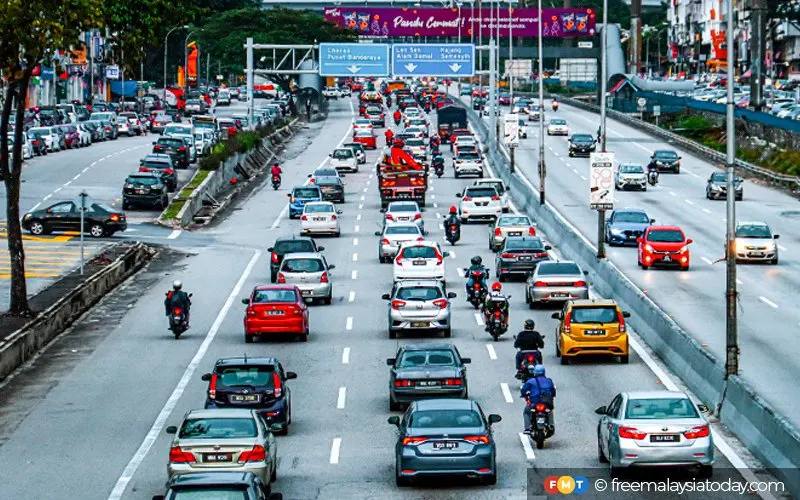9 July 2022

The sharp increase in the number of vehicles on roads in the federal capital of late may result in the creation of an “urban heat island” effect, where temperatures in the city are warmer than in the suburbs, according to a planning expert.
Professor Muhammad Zaly Shah Muhammad Hussein of Universiti Teknologi Malaysia said the phenomenon was aggravated by densely-constructed buildings and paved road surfaces which can form an island of trapped heat in a locality.
“There is a study done in the central business district of Bukit Bintang,” he said.
“When there is traffic congestion on roads filled with tall buildings, the exhaust fumes released cannot disperse into the air but are trapped to create a heat bubble.
“The situation affects city folk, resulting in higher utility costs as well as increased energy consumption to cool the interior of buildings, thus increasing the greenhouse gas content,” said Zaly Shah, who is director of the university’s centre for innovative planning and development.
The federal capital has registered a 45% increase in the number of vehicles, with 46.76 million recorded in December 2021 compared to 26.51 million in December 2019, according to Federal Territories deputy minister Jalaluddin Alias.
Zaly Shah said the probability of the UHI phenomenon occurring is very high during hot and dry weather, with temperatures rising between one and two degrees Celcius compared to normal temperatures.
He said air quality was obviously better during the lockdown under the movement control order (MCO) as a smaller volume of vehicles entered the city, but air quality worsened after the MCO was lifted.
“As a comparison, on March 18, 2020 (during the MCO) the Air Quality Index (AQI) in Kuala Lumpur was 50 points, but on May 1 this year it was 72 points. The higher the AQI value, the lower the air quality,” he said.
Prof Mohd Talib Latif at Universiti Kebangsaan Malaysia said the number of vehicles was directly proportional to pollution: the higher the number of vehicles, the higher the air, noise and vibration pollution.
He said gases and fine particulates released by vehicles such as carbon monoxide, sulphur dioxide, nitrogen dioxide and ‘Particulate Matter 2.5’ had relatively high concentrations on congested roads.
“Although air pollutants do not necessarily pose an immediate danger to the human respiratory system, they can have long-term effects on health as well as contribute to climate change and global warming through greenhouse gas emissions such as carbon dioxide,” he said.
Source: www.freemalaysiatoday.com
Site Search
Did you find what you are looking for? Try out the enhanced Google Search: